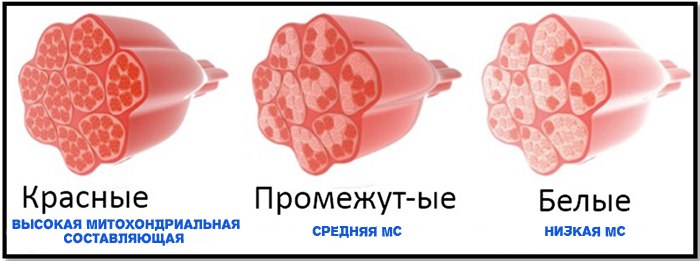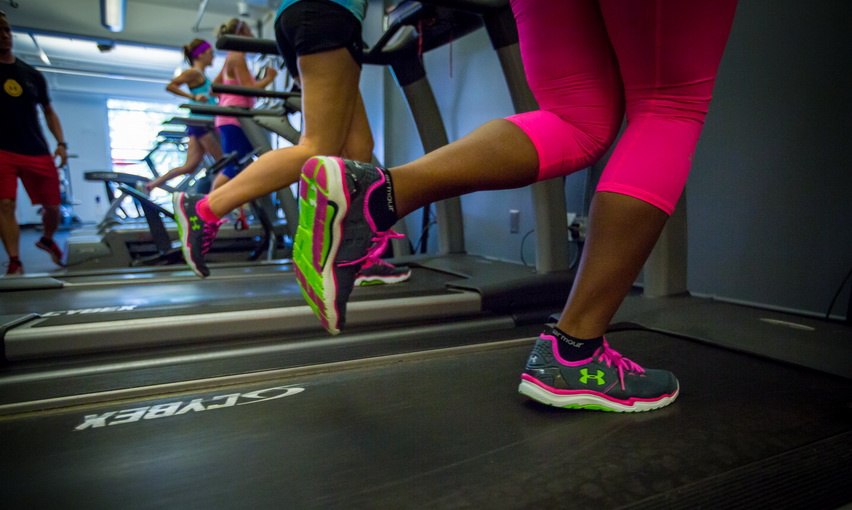What do you know about human muscles?”
No doubt, many of you will answer that we only need muscles for strength and holding some kind of weights, both in the gym and in everyday life. For some, it’s purely aesthetic. But human muscles are not so primitive as to have only one purpose and to be limited to this kind of only one strength function. The task of muscles lies in the ability to perform loads of different types, for example, as long-term – quite light for a long time, but also short-term, but quite intense.

Today you will have a goal to run a marathon for a few hours, tomorrow you will have a strength training session at the gym. And your muscles will perform both functions. The only difference will be how you do it, and how quickly you give up in one type of exertion.
Wouldn’t you agree? Not every load comes equally easy to every person. Especially if a person has never paid enough attention to training, let alone athletes.
Not every person is the same.
What muscle fibers are responsible for our strength and endurance?
Based on these functions and purposes of muscles, scientists of the Institute of Physiology of the United States back in the twentieth century proposed to divide the types of muscle fibers into several, depending on how fast they contract and how resistant to fatigue (simply put, combining the two features of fibers).
Based on these functions and purposes of muscles, scientists of the Institute of Physiology of the United States back in the twentieth century.

- Glycolytic (or fasted, i.e., quickly fatigued)
- Intermediate (fast, very resistant to fatigue)
- Oxidative (or slow, resistant to fatigue)
-
- Fast glycolytic fibers. They have a small number of capillaries in their composition, they are also called white, due to the color, they are twice as thick as red fibers. React quickly enough to the signal that comes from the brain – twice as much as the slow ones.
The source of energy – creatine-phosphates, glycogen, ATP, which in fast fibers are 2-3 times more active, they are more quickly processed and more quickly give the muscles an influx of energy. Unfortunately, during this time – these same sources are depleted. Only less than 1 minute of vigorous physical activity is enough. Fast glycolytic fibers take energy without the use of oxygen, and this gives us almost lightning fast energy. The disadvantages are depletion of the body’s reserves. Therefore, it is absolutely necessary to fill glycogen reserves after strength training, as proteins and carbohydrates. Do not starve yourself under any circumstances!
Let’s conclude. White muscle fibers are designed for intense, but short-term loading, they are not able to withstand multiple repetitions in exercises and monotonous work for a long period of time.
- Intermediate fibers. The number of mitochondria (energy-producing organelles of the cell) in them is significantly reduced, and during work, the muscle accumulates glucose breakdown products – lactic acids, but fatigue occurs much slower than glycolytic fibers.
- Slow oxidative fibers. They are called red fibers (due to the large number of capillaries). They are engaged and work under prolonged but light exertion. They have more mitochondria and myoglobin, which are designed to store energy and use it gradually.
Source of energy – fatty acids, fats.
Red fibers are predominant in long-distance runners and athletes in other aerobic sports.
Red fibers are predominant in long-distance runners and athletes in other aerobic sports.
But the important difference between white glycolytic fibers and red oxidative fibers is this: they are more capable of increasing in size and to some extent in number (individual fibers separate during growth). The 30-60% increase in muscle mass is mainly due to the growth of white glycolytic fibers.
Ratio of white and red muscle fibers.
This ratio lies deep at the genetic level in each of us, and it is almost impossible to change it. More people have a predominance of slow red fibers – 60 to 40 (%), and literally only a quarter of people have the opposite ratio – 40 to 60 (%). Can you believe that?
People with predominant fast fibers make very gifted sprinters, bodybuilders and professionals in all other sports that require fast explosive power.
Should we emphasize only strength training?”
.

Or simply put, is it possible to design a workout program for yourself emphasizing only heavy weights?”
Frequent work with heavy weights is very draining on the muscles and the central nervous system (CNS). And this is a significant disadvantage. Our body needs a long recovery period (2-4 days).
Therefore, when doing sports, keep in mind that your personal trainer should competently approach to writing an individual training program for you, including, necessarily, both heavy weights, medium weights and minor, but c more repetitions, and cardio training.
Remember, dear readers, that cardio should never be removed from the training process: the more muscle mass we have, the greater the load on our heart.
Therefore, it is better to do cardio no more than 2-3 times a week for 20-30 minutes, but not daily. These endurance workouts improve the muscle’s ability to store glycogen and creatine phosphate.
So it’s best to do cardio more than 2-3 times a week, not every day.
Growing white glycolytic fibers is the key to successfully building a beautiful body and proportions, so strength exercises in the gym are central to a bodybuilder’s training process. Be sure to remember that each exercise for the effective growth of muscle mass and the development of strength should be performed with the most correct technique, in order to avoid sprains and tendons, and other various injuries.

So…
You have learned that there are several types of muscle fibers in our muscles. A muscle does not function as a single unit. Those people who have been involved in fitness and bodybuilding for a long time should understand this. Muscles have fibers that are different in their “specialization.”
There are two types of muscles, those responsible for endurance and those responsible for strength. Each muscle has both fast (white, denser) and slow fibers (red). It is only genetically that the ratio of them in each muscle can vary differently.
1. Someone has good endurance, fatigue resistance in active aerobic training (e.g. distance) or static training (fixing the position for time), but poor performance with weights.
2.On the contrary, anaerobic training (gym, heavy weights) is easier for someone, the muscle response is much greater/muscle growth/strength than endurance (cardio, static). And that’s fine.
You can’t go against the system, and those fibers that are “lagging behind”, no matter how long you train them, you won’t get 100% feedback, but you can certainly make the performance better than it was.
The main thing is to give the load on strength or endurance gradually.
Friends, train intelligently.
Author of the article:
Nastya Vershinina (instagram.com/realcurl),
personal coach of Bodybuild Chernigov






